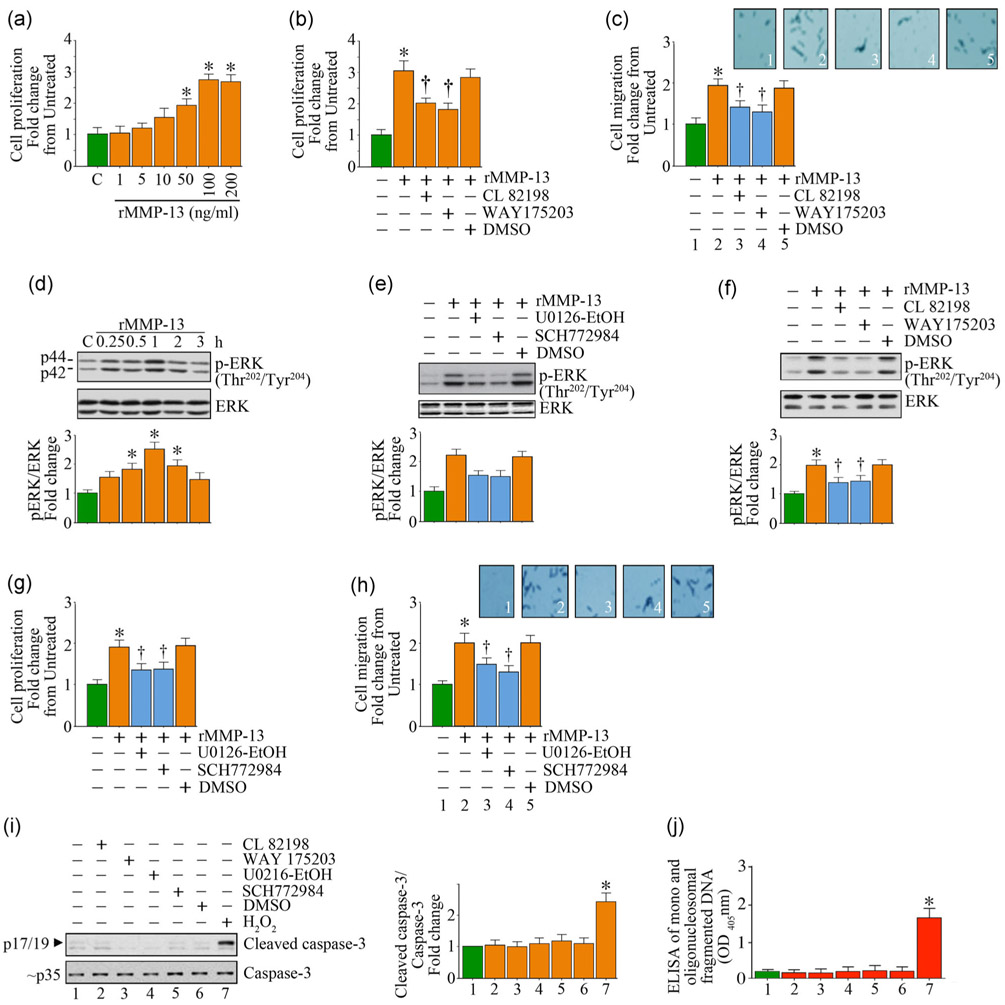FIGURE 6.
Recombinant biologically active human MMP-13 (rMMP-13) induces SMC proliferation and migration in part via MEK/ERK activation. (a,b) rMMP-13 induces SMC proliferation in a dose-dependent manner as analyzed by the CyQUANT® assay. (b,c) rMMP-13-induced SMC proliferation (b) and migration (c) are attenuated by the MMP-13-specific inhibitors CL 82198 and WAY175203. (d-f) rMMP-13 induces ERK1/2 activation in a time-dependent manner (d), and is inhibited by the MEK (U0126-EtOH) and ERK (SCH772984) inhibitors (e), as well as the MMP-13-specific inhibitors CL 82198 and WAY175203 (f). (g-j), Pharmacological inhibitors of MEK, ERK, and MMP-13 attenuate rMMP-13-induced SMC proliferation (g) and migration (h), without inducing cell death (i,j). Cell death was analyzed by immunoblotting using antibodies that detect active and total caspase-3 levels (i) and ELISA that quantifies mono and oligonucleosomal fragmented DNA in cytoplasmic extracts (j). (c,h) Insets show images of cells migrated to the other side of the Matrigel basement membrane. (d-f,i) The intensity of immunoreactive bands from three independent experiments is semiquantified by densitometry and summarized in the bottom or right hand panels. DMSO: dimethyl sulfoxide; ELISA: enzyme-linked immunosorbent assay; MMP-13: matrix metalloproteinase-13; SMC: smooth muscle cell. *p < at least 0.01 versus untreated; †p < at least 0.01 versus IL-17A

